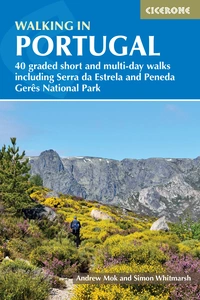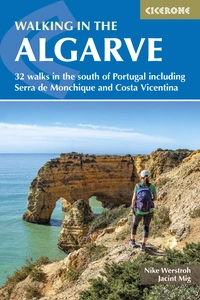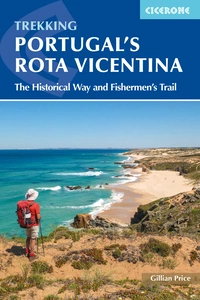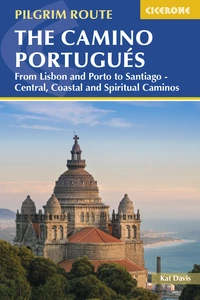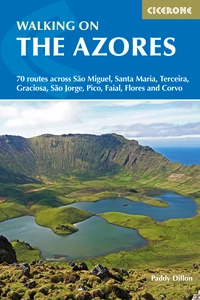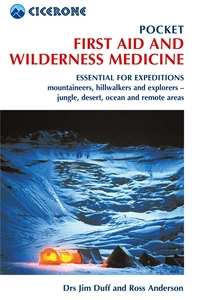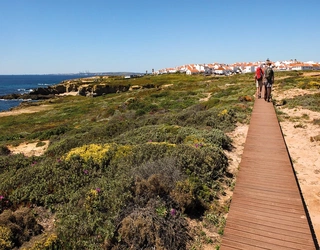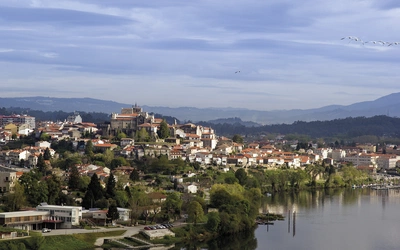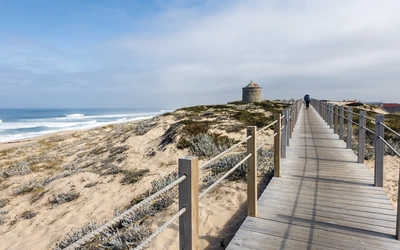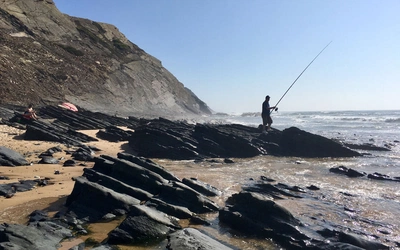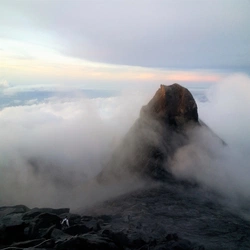Plant Spotting in Portugal
Simon Whitmarsh and Andrew Mok were not only astounded by the walking opportunities in Portugal but also its wild flowers. Here, the authors of the Cicerone guidebook to walking in Portugal, describe where to see some of their favourite plants and flowers.
Walking in Portugal
40 graded short and multi-day walks including Serra da Estrela and Peneda Gerês National Park
£17.95
Guidebook describing over 40 walks throughout Portugal. The mainly circular half-day and day routes cover most National and Nature Parks in Portugal including the country's highest peak in Serra da Estrela, as well as visiting traditional stone-built villages and sites of historical interest. Includes background information.
More informationOne of the reasons that we were so excited about walking in Portugal was the plant-life, especially the wildflowers. There is such a diverse range of growing conditions, giving rise to habitats for a huge variety of plants. Dramatically reducing the amount of herbicide used in farming has helped to fuel an explosion of wildflowers, particularly in spring. We are keen amateur gardeners and adore being surrounded by so many excitingly unfamiliar blooms.
North Portugal
Peneda Gerês, Portugal’s only national park, is a wonderfully mountainous area. Let’s start with these delightful alpine miniature daffodils. The hoop petticoat daffodil, Narcissus bulbocodium, found throughout Portugal, is the smallest and most delicate of all daffodils, although its Latin name refers to what you cannot see (it means ‘woolly bulb’).
It usually precedes the Angel’s tears daffodil, Narcissus triandrus, found only on higher ground in the middle to the north of the country.
Later on in spring you might be lucky enough to see a clump of the IUCN red-listed Peneda Gerês iris, Iris boissieri, found only here. It is such a striking purple colour that cultivated varieties have been added to gardens that can replicate its highly specialised environment.
All of the above cope with the harsh summers by flowering before the blistering heat, whereas the autumn crocus Colchicum carpetanus mainly flowers afterwards, as this dainty specimen did in Serra Estrela, our next area.
This, the highest area in Portugal, is where we encountered the supposedly rare fritillary, Fritillaria nervosa, sub-species nervosa nodding at us frequently. It is found only here and in Peneda Gerês. The giant single-stemmed asphodel Asphodelus macrocarpus is also found only within the northern mountainous areas, whereas its more common branched cousin is mainly found in the south. The photo of the ‘crimson ballet dancer’ looking tongue orchid Serapias lingua was taken along the Zêzere Valley, although they are relatively common in the whole country.
Central Portugal
The yellow lupin Lupinus luteus and the strawberry tree Arbutus unedo provide two unusual culinary delights. The beans of the former are pickled to make the snack tremocos. The strawberry tree has flowers and fruits simultaneously; one of the only trees to do this, and its fruits are used to make the fearsomely alcoholic drink Medronho.
In so many places, we were overwhelmed with wildflowers in the spring. A few captured here include purple viper’s bugloss, Echium plantagineum, often seen as fields of purple flowers with red/pink buds; the tassel hyacinth, Muscari comosum; or the frequently seen topped purple lavender, Lavandula stoechas, which the Portuguese call rosmaninho, not to be confused with rosemary, which they call alecrim. Water crowfoot, Ranunculus peltatus, is commonly seen carpeting streams, and the widespread gum rockrose, Cistus ladanifer, subspecies ladanifer, which originates in Portugal, tolerates poor, dry soil, and has taken over a lot of the landscape due to deforestation. All of the above can be found throughout the country.
South Portugal
The hot, dry south is perfect for the non-native century plant Agave americana, so called because it flowers so infrequently. Costa Vicentina has very low-lying plants adapted to withstand the drying Atlantic winds, salty conditions and hot, dry summers. This IUCN red-listed type of knapweed, Centaurea vicentina, is found only here.
The south is also the only place we saw this stinking broomrape (Orobanche foetida yellow variant), on sandy shores, parasitising other dune dwellers, and this gorgeous endemic Iberian peony, Paeonia broteri, in Serra de Monchique.
When to go
To see blooms, we would recommend coming here in spring. Your eyes will feast on an abundance of wildflowers: poppies, lavender, saxifrage, geraniums, buttercups, orchids, iris, broom (including the white one, found only here), rockrose, lupins (yellow, purple, miniature purple and almost white), daisies, and so many more. The timing of the season does vary depending on which part of Portugal you are in. In Estrela, it might start in May, whereas in the nearby Douro area, which has a lower altitude and the influence of the river, spring tends to start in March. Bear in mind some plants could flower even earlier. The best time to see the famed almond blossoms, whose petals can carpet the ground like snow, is usually February in Douro. However, the weather can be unpredictable; in 2016, the almond flowering season was finished by January. Further south in the Algarve, warmer temperatures bring the flourish of spring flowers even earlier. So, theoretically, one could be seeing spring flowers from February until June by travelling to the right part of Portugal at the right time
Conclusion
There are so many more flowers that we could have included, and the profusion is remarkable, as can be seen in the pictures. We have found the Portuguese wildflower website flora-on a fabulous resource for information on and for identifying plants, although, as always, any errors are entirely our own.

